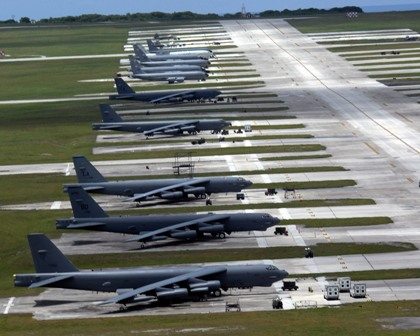The need for modernization of the U.S. nuclear forces was made clear by speakers at a strategic nuclear enterprise symposium here, Sept. 18.
“We’re here to share thoughts about the current state of, and the way forward for the nuclear strategic deterrent enterprise.” said Mark Jantzer, the Task Force 21 chairman.
Much of the discussion during the symposium was centered on the need for modernization of U.S. nuclear forces.
The annual symposium, sponsored by the Minot Chamber of Commerce’s Task Force 21, brings defense officials, government executives and civic leaders together to discuss strategic force structure and modernization.
“You don’t want them to have to be the person to walk into the Oval Office in 2025 or 2028 or 2030 and say ‘Mr. or Madam President, I’m so sorry but we just aren’t able to neutralize that threat to America,'” said Maj. Gen. Garrett Harencak, the Strategic Deterrence and Nuclear Integration assistant chief of staff. “We have to convince the American people, folks in our government and folks in our own military of the incredible relevancy of a nuclear deterrent today and in the future.”
One such modernization program spoken about at length during the symposium was the upcoming long range strike-bomber.
“As we look forward, I think that our modernization programs are absolutely essential,” said Lt. Gen. Stephen Wilson, the commander of Air Force Global Strike Command. “I’m paraphrasing the (chief of staff of the Air Force), but it’s time for us to become the nuclear force that our nation needs us to be, not the nuclear force we used to be.”
The LRS-B is one of the Air Force’s top acquisition priorities, Wilson explained. Of the current U.S. nuclear-capable bombers, the last B-52 Stratofortress came off the line in 1962 and the B-2 Spirit just turned 25. If The U.S. is to be able to continue holding any target at risk, anywhere in the world, it’s going to need a bomber capable of penetrating whatever advanced air defense systems America’s adversaries can come up with in the foreseeable future.
Other current modernization efforts discussed included the long range standoff-missile as well as upgrades for the Minuteman III intercontinental ballistic missile, and its eventual replacement program, the Ground-Based Strategic Deterrent.
“[The GBSD] is a key program as we move forward,” Wilson said. “The Minuteman III was designed in the 1960s and it’s been on alert since 1973. We have to replace that missile.”
A replacement for the current Ohio-class ballistic missile submarine was also discussed.
Unlike the U.S., both Russia and China are currently testing new models of ballistic missile submarines, according to Rear Adm. Joseph Tofalo, the director of the Navy’s Undersea Warfare Division.
The Ohio-class was originally designed with a service life of 30 years, but due to budget constraints the retirement of the class has been delayed until 2031 — 20 years past its original expected retirement.
“For the foreseeable future, certainly for our and our children’s and our grandchildren’s lifetimes, the United States will require a safe, secure and effective strategic nuclear deterrent,” Tofalo said. “The ballistic nuclear submarine forces are and will continue to be a critical part of that deterrent. Each of the legs of the triad brings unique strengths that provide a strong deterrent against different classes of adversary threat, and each of the legs reinforces the effectiveness of the others.”
Adm. Cecil Haney, the commander of U.S. Strategic Command, discussed components beyond the triad that support the nuclear enterprise.
“Strategic deterrence is more than just the triad of platforms,” Haney said. “It includes robust and agile intelligence capabilities, dedicated space and ground sensors that provide critical early warning and assured national nuclear command, control and communications to move that information. (Deterrence) also includes sustaining the necessary infrastructure to support our nuclear roles, missions and weapons; maintaining missile defenses to defend against attacks and providing relevant space and cyberspace capabilities.
“All these areas are interrelated and we must leverage our capabilities and assess today’s threats in an integrated manner to ensure strategic stability,” the admiral continued. “In a world where our traditional adversaries are modernizing, emerging adversaries are maturing and non-state actors remain elusive and dangerous, we must get 21st century deterrence right… the reality is that an effective modernized nuclear deterrent force is needed now more than ever.”










